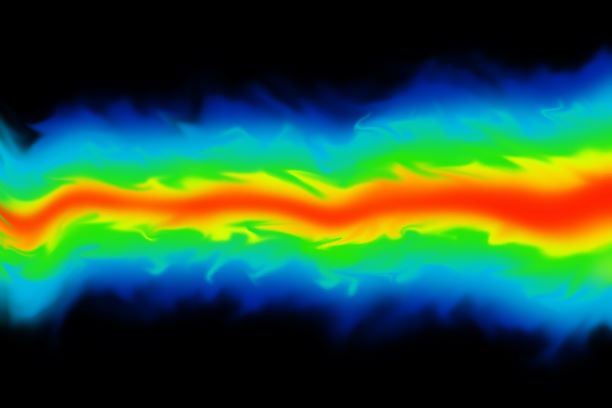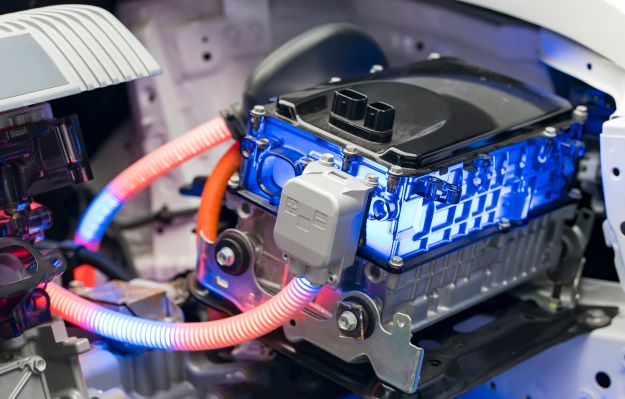Courses by Software
Courses by Semester
Courses by Domain
Tool-focused Courses
Machine learning
POPULAR COURSES
Success Stories
Rayleigh Taylor Instability Challenge
Introduction: Rayleigh-Taylor instability (RTI) is the interpenetration of process that occurs whenever a light fluid pushes on a heavy fluid. It is a dynamic process whereby the two fluids seek to reduce their combined potential energy by rupturing plane between them. The ensuing turbulence and mixing has far-reaching…
Aditya Purkar
updated on 03 Feb 2021
Introduction:
Rayleigh-Taylor instability (RTI) is the interpenetration of process that occurs whenever a light fluid pushes on a heavy fluid. It is a dynamic process whereby the two fluids seek to reduce their combined potential energy by rupturing plane between them. The ensuing turbulence and mixing has far-reaching consequences in many natural and man-made flows, ranging from supernovae to ocean waves.
Some practical CFD models that have been based on the R-T criteria are
- Richtmyer-Meshkov Instability: occurs when two fluids of different density are impulsively accelerated. Normally this is by the passage of a shock wave. The development of the instabilitybegins with small amplitude perturbations which initially grow linearly with time. This is followed by a nonlinear regime with bubbles appearing in the case of a light fluid penetrating a heavy fluid, and with spikes appearing in the case of a heavy fluid penetrating a light fluid. A chaotic regime eventually is reached and the two fluids mix. This instability can be considered the impulsive-acceleration limit of the Rayleigh–Taylor instability
- Kelvin–Helmholtz instability (after Lord Kelvinand Hermann von Helmholtz) typically occurs when there is velocity shear in a single continuous fluid, or additionally where there is a velocity difference across the interface between two fluids. A common example is seen when wind blows across a water surface; the instability constant manifests as waves. Kelvin-Helmholtz instabilities are also visible in the atmospheres of planets and moons, such as in cloud formations on Earth or the Red Spot on Jupiter, and the atmospheres (coronas) of stars, including the sun's.
- Saffman–Taylor instability: also known as viscous fingering, is the formation of patterns in a morphologically unstable interface between two fluidsin a porous medium, described mathematically by Philip Saffman and I. Taylor in a paper of 1958. This situation is most often encountered during drainage processes through media such as soils. It occurs when a less viscous fluid is injected, displacing a more viscous fluid; in the inverse situation, with the more viscous displacing the other, the interface is stable and no instability is seen. Essentially the same effect occurs driven by gravity (without injection) if the interface is horizontal and separates two fluids of different densities, the heavier one being above the other: this is known as the Rayleigh-Taylor instability. In the rectangular configuration the system evolves until a single finger (the Saffman–Taylor finger) forms, whilst in the radial configuration the pattern grows forming fingers by successive tip-splitting
Aim:
To simulate Rayleigh-Taylor instability, for water-air and water-user specified fluid.
Geometry setup:

Two rectangles were drawn of size 20x20mm in sketch command and they were 'pulled' to become surfaces. This is 2D simulation, hence surfaces were created. One of the rectangles would represent the containment of water and the other would be of air. As these are to be represented as different fluids, and mesh information needs to be shared in between, topology should be changed to 'share'.
That is all in geometry setup. Next, we move to mesh and physics setup.
Case 1: Base mesh size 0.5 mm


Animation:
https://drive.google.com/file/d/1oP8kNPdEO48jQfu7BZf4rdkjekg8k1df/view?usp=sharing
Case 2: Base mesh size 1 mm


Animation :
https://drive.google.com/file/d/1GYEi12kmS7NAfro45JK7ojZCuCfY8qKU/view?usp=sharing
Case 3: Base mesh size 0.25 mm


Animation :
https://drive.google.com/file/d/1XFwK-YxVT_zLm1X49UmxIsLaRbAlggRJ/view?usp=sharing
Case 4: simulation with water and user-defined material(density = 400 kg/m3, viscosity = 0.001 kg/m-s) for refined mesh.

Animation:
https://drive.google.com/file/d/10v56Ko3vXg76OQZjB7qnjQbYxTRLlrbH/view?usp=sharing
Conclusion :
Case 1,2 and 3 shows as the mesh size reduces, bubble formation seemed to be increased. Steady state simulation is used when the only end result of the simulation is important. Here, we are interested in the process of fluid interaction. Hence, transient simulation is used. Also, transient simulation gave freedom to use different time steps and Courant number as per the mesh size.
Atwood Number:
The Atwood number (A) is a dimensionless number used in the study of hydrodynamic instabilities in density stratified flows. It is a dimensionless density ratio defined as
A =
where
ρ1 = density of the heavier fluid
ρ2= density of the lighter fluid
Atwood number is an important parameter in the study of Rayleigh–Taylor instability and Richtmyer–Meshkov instability. In Rayleigh–Taylor instability, the penetration distance of heavy fluid bubbles into the light fluid is a function of acceleration time scale, A.gt2 where g is the gravitational acceleration and t is the time.
Leave a comment
Thanks for choosing to leave a comment. Please keep in mind that all the comments are moderated as per our comment policy, and your email will not be published for privacy reasons. Please leave a personal & meaningful conversation.
Other comments...
Be the first to add a comment
Read more Projects by Aditya Purkar (9)
Week 1- Mixing Tee
Objective To simulate the flow of air through mixing tee and understand the effect of length of pipe and momentum ratio of velocity for mixing of air by using two different types of pipe i.e. short pipe and long pipe. About In industrial process engineering, mixing is a unit operation that involves…
26 May 2021 10:19 AM IST
Week 10 - Simulating Combustion of Natural Gas.
Part I Perform a combustion simulation on the combustor model and plot the variation of the mass fraction of the different species’ in the simulation using line probes at different locations of the combustor as shown in Fig. You need to plot for CO2, H2O, CH4, N2, O2, NOx emissions & Soot formation. …
26 May 2021 09:50 AM IST
Week 9 - Parametric study on Gate valve.
For this challenge, you will have to perform a parametric study on the gate valve simulation by setting the opening from 10 % to 80%. Obtain the mass flow rates at the outlet for each design point. Calculate the flow coefficient and flow factor for each opening and plot the graph. Discuss the results of the mass…
25 Mar 2021 11:25 AM IST
Week 8 - Simulating Cyclone separator with Discrete Phase Modelling
Aim: To perform analysis on cyclone separator and calculate the separation efficiency and pressure drop. Objective: To write a few words about any four empirical models used to calculate the cyclone separator efficiency. To perform an analysis on a given cyclone separator model by varying the particle…
12 Mar 2021 06:13 AM IST
Related Courses


Skill-Lync offers industry relevant advanced engineering courses for engineering students by partnering with industry experts.
Our Company
4th Floor, BLOCK-B, Velachery - Tambaram Main Rd, Ram Nagar South, Madipakkam, Chennai, Tamil Nadu 600042.
Top Individual Courses
Top PG Programs
Skill-Lync Plus
Trending Blogs
© 2025 Skill-Lync Inc. All Rights Reserved.













